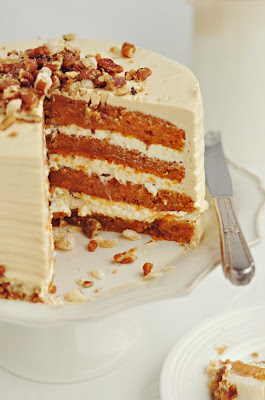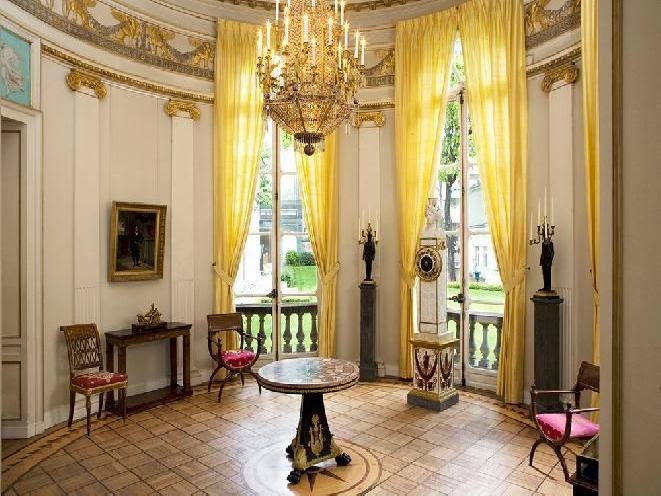
My most - read posts have overwhelmingly been those concerning
blue paint colors ( in April / May, 2011) . Two years later seems like a good time to check in again and see where blues are headed today. Let's begin with pale blue.
With all of the bold, crazy color out there, pale blue is softer and more neutral with applications in any number of settings. Pale blues make for wonderful neutrals...and the right ones also create soothing environments.
Benjamin Moore's " WOODLAWN BLUE " HC - 147.
" LIGHT BLUE " is a colour we have used in all our houses. It is an exceptionally subtle colour, sometimes blue, sometimes grey, always interesting. It is also a very calm colour and makes an elegant background for prints and engravings. "
- Ros Byam Shaw,
author of Farrow and Ball Living with Colour
via Ryland Peters and Small
“ If you wish for a slightly light blue room
this, rather than the more obviously - blue blues,
is the one to try. ”
– Farrow and Ball
" LIGHT BLUE" 22 is one of designer Phoebe Howard's
' most requested paint colors. ' "
' most requested paint colors. ' "
(This earns it a gold stamp in my book!)
Farrow and Ball's "LIGHT BLUE" 22
( shown above and below )
“Try light blue on your walls. It works well for bedrooms, bathrooms, and especially work spaces,
because it’s a powerful yet gentle mediator, bringing calm to all that clutter. To me, the most diplomatic shade of all is Farrow and Ball 22,
which approximates the color of lake water. Neutrals don’t need to go away – they simply need to soothe and anchor a room.” - Susan Ferrier
because it’s a powerful yet gentle mediator, bringing calm to all that clutter. To me, the most diplomatic shade of all is Farrow and Ball 22,
which approximates the color of lake water. Neutrals don’t need to go away – they simply need to soothe and anchor a room.” - Susan Ferrier
Farrow and Ball's "LIGHT BLUE" 22
( shown above and below ) "I'm always surprised when clients balk at color, and never surprised when they realize the difference it makes. In a transitional space like a stair hall, you have more freedom, so we tried a grayish - blue — soft, but with great depth. Once the client saw how it enriched the space, the deal was done." — Madeline Stuart
Farrow and Ball recommends
pairing "LIGHT BLUE" 22 with
their "SHADED WHITE" 201 and "SLIPPER SATIN" 2004 or
with their "HAGUE BLUE," 30 and "MOUSE'S BACK," 40, amongst others.
Farrow and Ball's "LIGHT BLUE" 22
( shown above and below )
( click here for a "LIGHT BLUE" paint story. )
Benjamin Moore
( shown below ) " Wedgwood Gray and Woodlawn Blue have that robin's egg vibe. I always hedge my bets toward grayed - down shades, because bright colors that look so happy in the paint store can look bizarre in real life. If you're nervous, start by painting the back wall inside the cabinets. "
( shown below ) " Wedgwood Gray and Woodlawn Blue have that robin's egg vibe. I always hedge my bets toward grayed - down shades, because bright colors that look so happy in the paint store can look bizarre in real life. If you're nervous, start by painting the back wall inside the cabinets. "
- Clare Donohue
" I am a huge fan of Benjamin Moore's "WOODLAWN BLUE" HC-147.
( shown above and below ) It is one of those watery blues that can be used in so many settings. It would look great in a cottage setting or a more transitional space
- it is such a great versatile color. " - Delorme Designs
“ There’s a vibrancy to this shade. It’s not shy. But it also has a kind of cloudiness, and those soothing gray undertones come out in the early morning and at dusk. ” - Michael Cox
( shown above and below ) "WOODLAWN BLUE
Benjamin Moore recommends pairing "WOODLAWN BLUE" with their "FALCON BROWN" 1238 and "LIGHTHOUSE LANDING" 1044 or with their "FRENCH BERET," 1610 and "BUTTERFIELD," 897
"WOODLAWN BLUE" ( shown above and below ) ranks amongst
BenjaminMoore
paint colors today.
( click here for a "WOODLAWN BLUE" paint story. )
Benjamin
paint colors today.
( click here for a "WOODLAWN BLUE" paint story. )
ADDITIONAL, WORTHWHILE PALE BLUE COLORS
Benjamin Moore " ALBEMARLE BLUE " DC - 11
from designer Darryl Carter's collection ( shown above and below )
According to Benjamin Moore, " This very subdued blue evokes
a sense of an early morning walk on the beach. "
Benjamin Moore’s “LOOKOUT POINT” 1646
( NO PHOTO AVAILABLE )
“[ LOOKOUT POINT is ] one of those elusive non - colors that reminds me of the time between morning dew and sunrise – a perfect marriage between khaki green and pale blue. Whatever room you put it in, it creates a calm, serene mood.” - Darryl Carter
“LOOKOUT POINT” [ is a ] weightless pale blue with the slightest touch of soft, smooth gray . . . [ it ] captures the appearance of the sky on an overcast morning. " - BenjaminMoore Paints
![]()
Benjamin Moore recommends pairing "LOOKOUT POINT" with their "NAVAJO WHITE" PM - 29 and "MIDNIGHT BLUE" 1638 or with their
"CAPE BLUE," 1642 and "PLUM ROYALE," 2070-20
Bossy Color Blog's Annie Elliott used “LOOKOUT POINT” 1646 for her own bedroom walls. Elliott describes it as "serene" and "lovely."
( NO PHOTO AVAILABLE )
“[ LOOKOUT POINT is ] one of those elusive non - colors that reminds me of the time between morning dew and sunrise – a perfect marriage between khaki green and pale blue. Whatever room you put it in, it creates a calm, serene mood.” - Darryl Carter
“LOOKOUT POINT” [ is a ] weightless pale blue with the slightest touch of soft, smooth gray . . . [ it ] captures the appearance of the sky on an overcast morning. " - Benjamin

Benjamin Moore recommends pairing "LOOKOUT POINT" with their "NAVAJO WHITE" PM - 29 and "MIDNIGHT BLUE" 1638 or with their
"CAPE BLUE," 1642 and "PLUM ROYALE," 2070-20
Bossy Color Blog's Annie Elliott used “LOOKOUT POINT” 1646 for her own bedroom walls. Elliott describes it as "serene" and "lovely."
"PALLADIAN BLUE" - Mitchell Gold + Bob Williams' Home, shown above
Benjamin
has been one of their top-selling colors for many years as well as interior designers' most - talked - about colors over the past decade. It also ranks amongst
Benjamin Moore's Facebook Fans' Favorite Colors.
Benjamin Moore's Facebook Fans' Favorite Colors.
Benjamin Moore
( shown above and below )
( click here for a "PALE SMOKE" paint story )
Farrow and Ball's " SKYLIGHT " 205
( shown above and below )
“ [ "SKYLIGHT" ] is a calming and versatile color
and mixes with black lacquer wonderfully . . . a Venetian blue - gray.”
- Alessandra Branca
Shape Magazine counts Benjamin Moore's “LOOKOUT POINT” 1646
All three colors are recommended to
below: "YARMOUTH BLUE" HC - 150, and "WHITE SATIN" 2067 - 70
"YARMOUTH BLUE" HC - 150 is also one of
Benjamin Moore's " 10 Best - Selling Blues. "
H A P P Y P A I N T I N G ! :)










































































































































































































+of+tumblr_mdauqa3qWC1qd8ajzo1_500.jpg)
























































































































































































.jpg)

.jpg)










































































